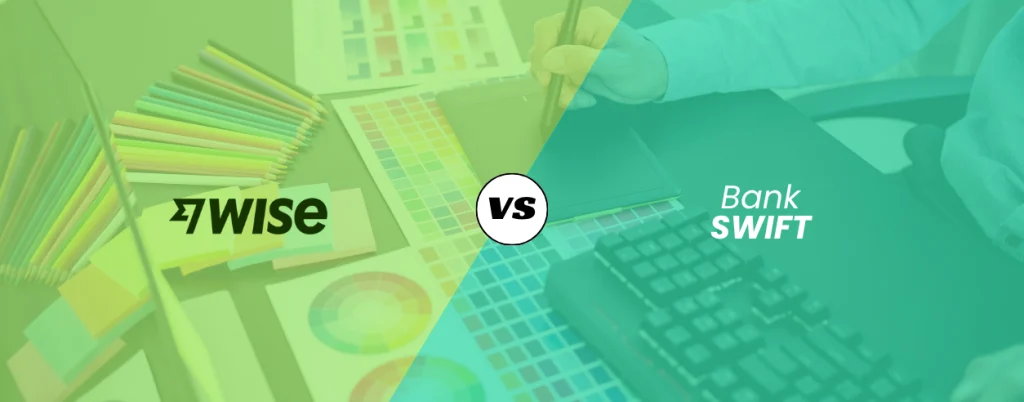Running a design or creative studio that serves international clients means mastering a deceptively complex equation: converting creative work into predictable cash flow while navigating foreign exchange rates, payment processing fees, compliance requirements, and client preferences across multiple jurisdictions. After spending over two decades managing export finance operations, FX trading desks, and agency cash flows, I’ve learned that the “cheapest” way to receive client payments isn’t determined by the advertised fee structure—it’s determined by the total INR that lands in your account after accounting for hidden spreads, timing delays, reconciliation overhead, and regulatory compliance costs.
The fundamental challenge for creative services exporters lies in the intersection of cash flow predictability and cost optimization. Unlike product exports where payment terms are clearly defined and timing is structured around shipping schedules, creative services operate on milestone-based payments, retainer structures, and project completion schedules that require flexible, efficient payment infrastructure. The choice between traditional banking methods and modern international payment methods like Wise, combined with emerging fintech solutions designed specifically for exporters, can mean the difference between sustainable growth and operational constraints that limit your ability to compete for global projects.
This comprehensive analysis examines the real-world economics of different payment methods, moving beyond marketing claims and fee comparisons to focus on total cost of ownership, operational efficiency, and strategic advantages. Whether you’re a freelance designer receiving your first international payment or scaling a creative agency with millions in annual export revenue, understanding these dynamics will help you build payment infrastructure that supports growth rather than constraining it.
The Hidden Economics of International Payments for Creative Services
The creative services industry operates under unique financial pressures that make payment method selection critically important for sustainable operations. Unlike manufacturing exports where payment terms are negotiated as part of larger trade relationships, creative services typically involve smaller, more frequent payments with shorter payment cycles and higher sensitivity to processing delays. These characteristics mean that seemingly minor differences in payment processing can compound into significant operational impacts over time.
Understanding Total Cost of Ownership Beyond Headline Fees
When creative studios evaluate payment methods, the natural tendency is to focus on advertised fees and exchange rate spreads. However, the total cost of receiving money from abroad encompasses multiple components that often remain hidden until they impact your cash flow or operational efficiency. The most significant hidden costs typically include foreign exchange timing risk, reconciliation labor, compliance documentation delays, and opportunity costs from delayed fund availability.
Foreign exchange timing risk represents perhaps the largest hidden cost for creative services, particularly when dealing with volatile currency pairs or extended settlement timeframes. When a client approves a $10,000 milestone payment on Monday, but funds don’t settle in your Indian account until Thursday due to correspondent banking delays, you’ve effectively transferred FX risk from your client to your business. This risk compounds during periods of currency volatility, where a 2-3% adverse movement during settlement can exceed the total visible fees for the transaction.
The reconciliation overhead for international payments often consumes more finance team time than studios anticipate, particularly when dealing with traditional banking methods that provide limited transaction detail or require manual certificate requests for compliance purposes. For studios processing multiple client payments monthly, this reconciliation effort can represent substantial opportunity costs that would be better invested in business development or creative work.
Compliance documentation represents another area where payment method selection directly impacts operational efficiency. Creative services exporters must maintain proper documentation for GST zero-rating claims, income tax assessments, and various export incentive programs. Payment methods that provide structured transaction data and automated certificate generation can significantly reduce the manual effort required for compliance management.
The Creative Services Cash Flow Reality
Creative agencies operate under cash flow patterns that make payment timing critically important for operational stability. Unlike businesses with steady revenue streams or predictable collection cycles, creative services often depend on milestone-based payments that can vary significantly in timing and amount. This variability makes fast, predictable payment processing essential for maintaining operational stability and avoiding cash flow constraints that can limit your ability to take on new projects or invest in team growth.
The project-based nature of creative work also means that payment delays have cascading effects throughout the business. When a major client payment is delayed by several days due to banking processing inefficiencies, it can impact payroll timing, vendor payments, and your ability to commit to new project timelines. For studios operating on thin margins, these delays can create operational stress that affects team performance and client relationships.
The seasonal nature of many creative businesses compounds these cash flow challenges. Agencies often experience concentrated payment periods around project completion cycles, holiday seasons, or client budget periods. Having payment infrastructure that can handle volume spikes efficiently while maintaining consistent processing times becomes essential for managing these seasonal variations without creating operational bottlenecks.
Wise vs Bank Wire: A Deep Dive into Operational Realities
Understanding the practical differences between modern international payment methods like Wise and traditional bank wires requires examining not just the fee structures and exchange rates, but the entire operational experience from client payment initiation through final settlement and compliance documentation. These operational differences often have more significant business impact than pure cost considerations.
How Wise Actually Works for Creative Services
Wise operates on a fundamentally different model than traditional correspondent banking, creating operational advantages that extend beyond cost savings. When your client pays through Wise, they’re making a domestic payment in their local currency using familiar payment methods like ACH transfers in the US, SEPA payments in Europe, or Faster Payments in the UK. This domestic payment approach eliminates many of the friction points and uncertainties associated with international wire transfers.
The operational flow for Wise payments begins with your client receiving a payment link or bank details for a local account in their jurisdiction. They initiate payment using their preferred domestic banking method, which typically processes within hours rather than days. Wise then converts the funds using their published exchange rate and forwards the INR equivalent to your Indian bank account through domestic banking channels. This process typically completes within 24-48 hours from initial payment, compared to 3-5 business days for traditional wire transfers.
The transparency of Wise’s process provides significant operational advantages for creative studios. Unlike traditional banking where exchange rates and fees are often applied at settlement without prior notification, Wise provides upfront visibility into the exact INR amount that will be credited to your account. This transparency enables accurate cash flow forecasting and eliminates the surprise deductions that can disrupt project budgeting.
For recurring client relationships, Wise enables setup of saved payment methods that streamline the payment process for repeat transactions. Clients can initiate payments through familiar interfaces without needing to navigate international wire transfer procedures, reducing payment friction and improving collection success rates. This ease of use often translates to faster client payment cycles and improved working capital efficiency.
Traditional Bank Wire Operations: The SWIFT Reality
Traditional SWIFT-based wire transfers operate through a correspondent banking network that was designed for large-value, infrequent transactions between established financial institutions. While this system provides universal coverage and regulatory acceptance, it creates operational complexities that can significantly impact the total cost and timeline for creative services payments.
The SWIFT payment process involves multiple intermediary banks, each of which applies their own processing procedures, compliance checks, and fee structures. When your client’s bank initiates a wire transfer, the payment typically routes through 2-4 correspondent banks before reaching your Indian account. Each intermediary can apply processing fees, compliance deductions, or conversion charges without prior notification to either you or your client.
The timing uncertainty of SWIFT transfers creates particular challenges for creative services cash flow management. While domestic banking typically provides predictable processing timeframes, international wire transfers can experience delays due to correspondent bank processing schedules, compliance holds, incomplete documentation, or cut-off time differences across time zones. A payment initiated on Friday afternoon in New York might not settle in your Indian account until Wednesday, depending on weekends, holidays, and processing delays.
The documentation requirements for SWIFT transfers also create operational overhead that many creative studios underestimate. Proper wire transfer execution requires accurate beneficiary information, complete payment references, correct purpose codes, and often additional documentation for compliance purposes. Errors in any of these elements can result in payment delays, return fees, or compliance issues that require manual intervention to resolve.
Exchange Rate Mechanics: Where Real Costs Hide
The foreign exchange component of international payments represents the largest single cost element for most creative services transactions, often exceeding visible processing fees by substantial margins. Understanding how different payment methods handle currency conversion is essential for accurate cost comparison and informed decision-making.
Traditional banks typically apply foreign exchange spreads of 1.5-3% over interbank market rates, plus additional charges for currency conversion services. These spreads are often not disclosed upfront, making it impossible to predict the exact INR amount that will be credited to your account. Banks may also apply different rates based on transaction size, timing, or customer relationship status, creating additional variability in conversion costs.
Wise publishes their exchange rates and fees transparently, typically offering rates within 0.35-0.65% of the interbank mid-market rate plus an explicit service fee. This transparency enables accurate cost prediction and cash flow forecasting, eliminating the uncertainty associated with traditional banking conversion methods. For creative studios managing project budgets and profit margins, this predictability provides significant operational advantages.
The timing of currency conversion also impacts total costs significantly. Traditional wire transfers may apply exchange rates at different points in the processing cycle, depending on correspondent bank procedures and settlement timing. This timing variability can result in adverse rate movements during the multi-day processing period, effectively transferring currency risk from your client to your business.
Comprehensive Cost Analysis: Real Numbers for Creative Studios
Understanding the true cost differential between payment methods requires analyzing realistic transaction scenarios that reflect the actual payment patterns of creative services businesses. The following analysis examines multiple transaction sizes and frequencies to provide actionable insights for different types of creative operations.
Small Project Payments ($1,000 – $5,000)
For smaller project payments that represent the majority of transactions for freelance designers and small agencies, the cost differences between payment methods can significantly impact profit margins and cash flow efficiency.
Wise Cost Structure for $3,000 Project Payment:
- Exchange rate: Mid-market rate + 0.45% markup
- Service fee: $12-15 (0.4-0.5% of transaction)
- Total cost: Approximately 0.85-0.95% of transaction value
- Time to settlement: 24-48 hours
- Final INR: Predictable based on quoted rate
Traditional Bank Wire for $3,000 Project Payment:
- Sender fees: $25-50 (paid by client)
- Intermediary deductions: $15-30 (unpredictable)
- FX spread: 1.5-2.5% over mid-market rate
- Receiving bank charges: ₹500-1,000
- Total cost: 2.0-3.5% of transaction value (often hidden)
- Time to settlement: 3-5 business days
- Final INR: Variable based on settlement timing
For a $3,000 payment, this cost differential typically results in $45-75 additional INR retention when using Wise compared to traditional banking, while also providing faster settlement and better predictability. Over multiple payments, these savings compound significantly.
Medium Project Payments ($5,000 – $15,000)
Medium-sized payments represent milestone completions for larger projects or monthly retainer payments for established client relationships. At this transaction size, the absolute cost differences become more significant while percentage impacts remain substantial.
Wise Processing for $10,000 Milestone Payment:
- FX markup: 0.45% = $45
- Service fee: $35-40
- Total cost: $80-85 (0.8-0.85%)
- Speed advantage: 1-2 days faster settlement
- Documentation: Structured transaction data for easy reconciliation
Traditional Banking for $10,000 Milestone Payment:
- Hidden FX spread: 2.0% = $200
- Various processing fees: $50-75
- Potential intermediary deductions: $25-50
- Total cost: $275-325 (2.75-3.25%)
- Settlement uncertainty: 3-5 business days, sometimes longer
- Documentation: Manual certificate requests often required
The cost differential at this transaction size typically exceeds $200 per payment, representing material impact on project profitability and cash flow efficiency.
Large Enterprise Payments ($15,000+)
For larger payments from enterprise clients or major project completions, the dynamics shift somewhat as absolute costs become more significant while percentage impacts may decrease for some payment methods.
| Payment Size | Wise Total Cost | Bank Wire Total Cost | Savings | Time Advantage |
| $20,000 | $140-160 (0.7-0.8%) | $500-700 (2.5-3.5%) | $360-540 | 2-3 days |
| $50,000 | $300-400 (0.6-0.8%) | $1,000-1,500 (2.0-3.0%) | $700-1,100 | 2-3 days |
| $100,000 | $500-700 (0.5-0.7%) | $1,800-2,500 (1.8-2.5%) | $1,300-1,800 | 2-3 days |
At larger transaction sizes, the absolute savings become substantial enough to impact quarterly profitability, while the time advantages continue providing operational benefits for cash flow management and project planning.
Annual Impact Analysis for Different Studio Sizes
To understand the cumulative impact of payment method choices, consider the annual cost differential for different types of creative operations:
Freelance Designer (Annual export revenue: $50,000)
- Typical payment pattern: 20 payments averaging $2,500
- Annual savings with Wise: $1,800-3,000
- Operational time saved: 15-25 hours (reduced reconciliation)
Small Agency (Annual export revenue: $250,000)
- Typical payment pattern: 35 payments averaging $7,100
- Annual savings with Wise: $6,000-9,500
- Operational time saved: 40-60 hours
Mid-size Studio (Annual export revenue: $1,000,000)
- Typical payment pattern: 60 payments averaging $16,700
- Annual savings with Wise: $18,000-28,000
- Operational time saved: 80-120 hours
These annual impact figures demonstrate that payment method selection represents a material business decision that affects both direct costs and operational efficiency at scale.
Client Experience and Conversion Rate Impact
The payment experience you provide to clients directly impacts your ability to win new business, maintain existing relationships, and collect payments efficiently. In an increasingly competitive global creative services market, payment friction can become a differentiating factor that influences client decisions and project profitability.
Payment Friction Analysis
Traditional wire transfer requirements create multiple friction points that can negatively impact client relationships and payment collection efficiency. Clients must navigate unfamiliar international banking procedures, obtain specific beneficiary information, potentially visit bank branches for wire initiation, and pay substantial sender fees that may not be budgeted for project costs.
The complexity of wire transfer initiation often leads to payment delays as clients seek approval for sender fees, clarify beneficiary requirements, or correct incomplete transfer information. For time-sensitive project completions or cash flow-critical payments, these delays can create operational stress that affects both client satisfaction and studio operations.
Modern international payment methods like Wise eliminate many of these friction points by enabling clients to pay through familiar domestic banking channels. Clients can initiate payments online using their preferred banking apps or methods, without needing specialized international wire transfer knowledge or bank branch visits. This streamlined experience often results in faster payment initiation and improved collection success rates.
Geographic Considerations
Client payment preferences vary significantly across different jurisdictions, influenced by local banking infrastructure, regulatory requirements, and business culture. Understanding these preferences enables creative studios to offer payment methods that align with client expectations while optimizing for operational efficiency.
United States Clients:
- Strong preference for ACH-based payments for domestic feel
- Wire transfers reserved for large transactions or compliance requirements
- Increasing adoption of business payment platforms
- Sensitivity to international wire fees
European Union Clients:
- SEPA payments preferred for EUR transactions
- Strong regulatory framework supporting fintech adoption
- Wire transfers common for non-EUR currencies
- Generally comfortable with digital payment methods
United Kingdom Clients:
- Faster Payments adoption for GBP transactions
- Traditional wire transfers for USD payments
- High comfort level with fintech solutions
- Cost-conscious approach to international payments
Emerging Market Clients:
- Variable banking infrastructure quality
- Higher reliance on traditional banking methods
- Increasing fintech adoption in urban areas
- Cost sensitivity drives payment method selection
Understanding these geographic preferences enables creative studios to offer appropriate payment methods that optimize both client experience and operational efficiency for different market segments.
Operational Infrastructure for Creative Studios
Building efficient payment operations requires more than selecting the right payment methods—it requires creating systematic approaches to invoice management, payment tracking, reconciliation, and compliance documentation that can scale with business growth while maintaining accuracy and efficiency.
Invoice and Reference Management Systems
Effective international payment processing begins with proper invoice and reference management systems that ensure payments can be tracked accurately through the entire collection and settlement process. This foundation becomes increasingly important as transaction volumes grow and multiple payment methods are used simultaneously.
The key principle for reference management is creating unique, consistent identifiers that can be traced through payment initiation, processing, settlement, and compliance documentation. Many creative studios discover that their billing systems generate references that don’t translate well to international banking systems, creating reconciliation challenges that consume substantial administrative time.
Best practices for invoice reference management include:
• Standardized Format: Use consistent formatting across all invoices and payment communications (e.g., INV-2024-001, PROJECT-CLIENT-001) • Client Communication: Clearly communicate required payment references in invoices and follow-up communications • System Integration: Ensure billing systems, accounting software, and payment platforms can share reference data automatically • Validation Rules: Implement checks to prevent reference format errors that cause payment tracking issues
Multi-Method Payment Strategy
Most successful creative studios operate hybrid payment strategies that offer clients multiple options while optimizing different transaction types for appropriate payment methods. This approach maximizes client convenience while maintaining operational efficiency and cost control.
A typical multi-method strategy might include:
Primary Method (Wise or similar fintech):
- Small to medium regular payments ($1,000-$15,000)
- Retainer payments and milestone collections
- Clients comfortable with modern payment methods
- Transactions requiring fast settlement
Secondary Method (Traditional banking):
- Large enterprise payments requiring wire transfers
- Clients with “wire-only” policies
- Transactions requiring specific compliance documentation
- Backup option for fintech service interruptions
Specialized Methods:
- Marketplace payments through platforms like Upwork or 99designs
- Cryptocurrency payments for specific client segments
- Regional payment methods for specific geographic markets
Reconciliation Automation and Efficiency
Manual reconciliation of international payments represents one of the largest operational overhead areas for creative studios, particularly as transaction volumes increase. Modern payment infrastructure should enable automated reconciliation that connects payment receipts with invoices, compliance documentation, and accounting records without manual intervention.
Effective reconciliation automation typically includes:
• Real-time Payment Notifications: Immediate alerts when payments are received and processed • Automatic Invoice Matching: Systems that connect payment receipts to outstanding invoices based on reference matching • Exception Handling Workflows: Procedures for handling payments that don’t automatically match to invoices • Compliance Documentation Integration: Automatic linking of payment receipts to required compliance certificates • Accounting System Synchronization: Direct integration with QuickBooks, Xero, or other accounting platforms
The goal is reducing month-end reconciliation from hours of manual effort to automated reporting that requires only exception handling and verification.

Compliance Management for Creative Services
Creative services exporters must maintain comprehensive compliance documentation for GST zero-rating claims, income tax assessments, and various export incentive programs. The efficiency of compliance management depends heavily on how well payment infrastructure supports automated documentation and reporting.
Key compliance requirements include:
GST Zero-Rating Documentation:
- Evidence of foreign exchange realization within specified timeframes
- Proper classification of services under GST export categories
- Maintenance of export invoices and payment receipts
- Integration with GST filing systems for automated reporting
Income Tax Documentation:
- Complete records of foreign currency receipts and conversion rates
- Proper documentation of business expenses related to export services
- Evidence supporting transfer pricing compliance for related party transactions
Export Incentive Claims:
- Documentation supporting various government export promotion schemes
- Evidence of foreign exchange earning history for scheme eligibility
- Proper classification of services under Foreign Trade Policy categories
Modern payment infrastructure should support these compliance requirements through automated certificate generation, structured data capture, and integration with regulatory reporting systems.
Technology Integration and Automation Opportunities
Creative studios increasingly depend on integrated technology stacks that connect project management, client communication, billing, payment processing, and accounting into unified workflows. Understanding how different payment methods integrate with existing technology infrastructure can significantly impact operational efficiency and scalability.
API Integration Capabilities
Modern payment platforms provide API access that enables custom integration with existing business systems, creating opportunities for workflow automation that can dramatically reduce administrative overhead while improving accuracy and compliance.
Common integration scenarios include:
Project Management Integration:
- Automatic invoice generation upon project milestone completion
- Real-time payment status updates within project management dashboards
- Client notification automation for payment requests and confirmations
Accounting System Integration:
- Automatic creation of accounting entries upon payment receipt
- Real-time exchange rate updates for financial reporting
- Automated reconciliation between payment platforms and accounting records
Customer Relationship Management:
- Payment history tracking within client records
- Automated follow-up sequences for overdue payments
- Client communication automation for payment confirmations
Business Intelligence Integration:
- Real-time cash flow dashboards and forecasting
- Currency exposure analysis and hedging recommendations
- Client profitability analysis including payment processing costs
The sophistication of available integrations varies significantly between payment providers, making integration capabilities an important consideration for studios with complex operational requirements.
Automated Reporting and Analytics
Understanding payment performance, currency trends, and operational efficiency requires comprehensive reporting capabilities that many traditional banking relationships cannot provide. Modern payment platforms often include business intelligence features that provide insights into payment patterns, cost analysis, and operational optimization opportunities.
Key reporting capabilities include:
Payment Performance Analytics:
- Success rates by payment method and client geography
- Average settlement times and variability analysis
- Cost per transaction analysis across different payment methods
Currency and Risk Management:
- Foreign exchange exposure analysis by currency and time period
- Historical exchange rate performance and impact on realized proceeds
- Recommendations for currency hedging or timing optimization
Operational Efficiency Metrics:
- Time spent on payment-related administrative tasks
- Reconciliation accuracy and exception rates
- Compliance documentation completeness and timeliness
Client Behavior Analysis:
- Payment method preferences by client segment
- Payment timing patterns and predictability
- Impact of payment friction on collection success rates
This analytical capability enables data-driven decisions about payment infrastructure, pricing strategies, and operational process optimization.
Risk Management and Business Continuity
Creative studios operating internationally face multiple types of risk related to payment processing, currency fluctuation, regulatory compliance, and operational continuity. Understanding these risks and implementing appropriate mitigation strategies is essential for sustainable international operations.
Currency Risk Management
Foreign exchange risk represents one of the largest financial exposures for creative services exporters, particularly for studios with significant revenue concentration in volatile currency pairs or long project cycles that create timing mismatches between pricing and payment.
Transaction Risk: The risk that exchange rates will move adversely between project pricing and payment receipt. For studios pricing projects in foreign currencies, this risk can significantly impact profit margins, particularly for longer-term projects or those with deferred payment terms.
Translation Risk: The risk that currency fluctuations will impact the INR value of foreign currency-denominated receivables on your balance sheet. This risk is particularly relevant for studios with substantial outstanding receivables in foreign currencies.
Economic Risk: The risk that long-term currency trends will impact your competitive position in international markets. Sustained INR appreciation, for example, can make Indian creative services less competitive in global markets.
Mitigation strategies include:
• Natural Hedging: Maintaining foreign currency expenses to offset foreign currency revenues • Payment Method Selection: Choosing payment methods that minimize currency exposure timing • Pricing Strategies: Building currency risk premiums into project pricing or using INR-based pricing • Forward Contracts: Using financial instruments to lock in exchange rates for large transactions
Operational Continuity Planning
Dependence on specific payment providers or banking relationships creates operational risk that can disrupt business continuity if services become unavailable or relationships change unexpectedly. Creative studios should maintain diversified payment capabilities that enable continued operations even if primary payment methods experience disruptions.
Business continuity planning should address:
Provider Diversification:
- Maintaining relationships with multiple payment providers
- Ensuring backup payment methods are tested and operational
- Distributing payment volumes to avoid over-dependence on single providers
Geographic Risk Management:
- Understanding regulatory risks in key client markets
- Maintaining payment capabilities across multiple jurisdictions
- Planning for potential regulatory changes that could impact payment methods
Technical Infrastructure Resilience:
- Ensuring payment systems have appropriate uptime and reliability
- Maintaining offline capabilities for critical payment processing
- Planning for integration failures or API disruptions
Financial Institution Relationships:
- Maintaining relationships with multiple banking partners
- Understanding account closure or service termination policies
- Ensuring compliance documentation is maintained independently of payment providers
Strategic Considerations for Different Studio Sizes
The optimal payment infrastructure strategy varies significantly based on studio size, client base characteristics, transaction patterns, and growth objectives. Understanding these differences enables informed decision-making about payment method selection and operational investment priorities.
Freelance and Solo Creative Professionals
Individual creators and freelance designers face unique challenges in international payment processing, including limited negotiating power with financial institutions, sensitivity to per-transaction costs, and need for simple, automated processes that don’t require dedicated administrative resources.
Key Priorities:
- Minimizing total cost per transaction
- Maximizing automation to reduce administrative overhead
- Maintaining simple, predictable processes
- Ensuring reliable access to funds for personal cash flow management
Optimal Strategy:
- Primary reliance on modern payment methods like Wise for most transactions
- Simple backup banking relationship for clients requiring traditional methods
- Automated reconciliation through accounting software integration
- Focus on payment methods that provide immediate fund availability
Common Challenges:
- Limited banking relationship leverage for negotiating better rates
- Difficulty accessing enterprise-grade payment solutions
- Need to balance cost optimization with service quality
- Managing currency risk exposure on larger projects
Small to Medium Agencies (5-25 employees)
Growing creative agencies face scaling challenges that require more sophisticated payment infrastructure while maintaining cost efficiency and operational simplicity. These businesses typically process higher transaction volumes with more diverse client requirements, necessitating multi-method payment strategies.
Key Priorities:
- Scalable payment processing that grows with business volume
- Multi-method capabilities to serve diverse client preferences
- Automated workflows that reduce administrative burden
- Comprehensive reporting for financial management and tax compliance
Optimal Strategy:
- Hybrid payment infrastructure combining fintech and traditional banking
- Investment in API integration for automated workflow management
- Dedicated finance team member to manage payment operations
- Regular evaluation of payment method performance and costs
Growth Considerations:
- Planning payment infrastructure that can handle 2-3x transaction volumes
- Building client segmentation strategies for payment method optimization
- Investing in business intelligence capabilities for decision-making
- Preparing for potential enterprise client requirements
Large Studios and Enterprise Operations
Established creative operations with substantial international revenue require enterprise-grade payment infrastructure that can handle complex client requirements, regulatory compliance, and operational scale while maintaining cost efficiency and risk management.
Key Priorities:
- Enterprise-grade reliability and customer support
- Comprehensive compliance and regulatory reporting capabilities
- Advanced treasury management and currency risk mitigation
- Integration with complex enterprise resource planning systems
Optimal Strategy:
- Multi-provider payment ecosystem with specialized solutions for different requirements
- Dedicated treasury management function for currency risk management
- Custom integration development for unique operational requirements
- Comprehensive business continuity planning and risk management
Advanced Capabilities:
- Real-time cash flow forecasting and management
- Automated compliance reporting and documentation
- Advanced analytics for operational optimization
- Strategic financial planning integration with payment infrastructure
Future Trends and Emerging Technologies
The international payments landscape continues evolving rapidly, driven by technological innovation, regulatory changes, and shifting business requirements. Understanding these trends enables creative studios to make infrastructure investments that remain viable as the market continues developing.
Blockchain and Cryptocurrency Integration
While cryptocurrency adoption for B2B payments remains limited due to volatility and regulatory uncertainty, blockchain-based payment systems are beginning to emerge as alternatives for specific use cases, particularly for clients seeking innovative payment methods or operating in jurisdictions with limited traditional banking access.
Current applications include:
- Stablecoin payments for clients seeking cryptocurrency exposure without volatility
- Cross-border payment solutions using blockchain rails for faster settlement
- Smart contract-based milestone payments for complex projects
- Decentralized finance (DeFi) integration for yield generation on payment float
However, regulatory uncertainty, accounting complexity, and client adoption barriers limit mainstream viability for most creative services applications.
Central Bank Digital Currencies (CBDCs)
Multiple central banks are developing digital currency initiatives that could significantly impact international payment processing. India’s digital rupee pilot program and similar initiatives in other major economies may create new payment rails that combine the efficiency of digital payments with the regulatory certainty of central bank backing.
Potential implications include:
- Reduced reliance on correspondent banking networks
- Lower payment processing costs through government-backed infrastructure
- Enhanced regulatory compliance through built-in reporting capabilities
- Improved payment finality and settlement certainty
Artificial Intelligence and Automation
AI-powered payment processing systems are beginning to provide advanced capabilities including fraud detection, currency risk management, automated compliance monitoring, and predictive analytics for cash flow management.
Emerging capabilities include:
- Intelligent payment method selection based on transaction characteristics
- Automated currency hedging recommendations based on exposure analysis
- Predictive compliance monitoring to prevent documentation issues
- Advanced analytics for payment optimization and cost reduction
Regulatory Evolution
Payment regulation continues evolving globally, with increased focus on cross-border payment efficiency, consumer protection, and anti-money laundering compliance. These regulatory changes may create new opportunities for fintech innovation while potentially constraining certain payment methods or providers.
Key trends include:
- Increased regulatory support for fintech payment solutions
- Enhanced consumer protection requirements for cross-border payments
- Standardization of payment messaging and processing protocols
- Greater regulatory clarity around cryptocurrency and blockchain applications
Implementation Roadmap: Practical Steps for Optimization
Transitioning to optimal payment infrastructure requires systematic planning that addresses current operational requirements while positioning for future growth and evolution. The following roadmap provides actionable steps for creative studios seeking to optimize their international payment operations.
Phase 1: Assessment and Planning (Weeks 1-4)
Current State Analysis:
- Document all existing payment methods, costs, and processing times
- Analyze client payment preferences and geographic distribution
- Calculate total cost of ownership for current payment infrastructure
- Identify operational pain points and efficiency opportunities
Requirements Definition:
- Define transaction volume projections for next 12-24 months
- Specify client service requirements and payment method preferences
- Establish compliance and regulatory requirements
- Determine integration needs with existing business systems
Solution Evaluation:
- Research available payment providers and service capabilities
- Conduct cost-benefit analysis for different infrastructure options
- Evaluate implementation complexity and resource requirements
- Assess risk factors and business continuity implications
Phase 2: Pilot Implementation (Weeks 5-12)
Provider Onboarding:
- Complete account setup and compliance verification for selected providers
- Configure payment processing workflows and integration requirements
- Establish backup payment methods and business continuity procedures
- Train team members on new payment processes and systems
Limited Rollout:
- Begin processing select transactions through new payment infrastructure
- Monitor processing performance, costs, and client feedback
- Identify and resolve integration issues and operational challenges
- Refine processes based on initial operational experience
Performance Monitoring:
- Track key performance metrics including cost, speed, and reliability
- Monitor client satisfaction and adoption rates
- Document operational efficiency gains and remaining challenges
- Prepare for full-scale deployment based on pilot results
Phase 3: Full Implementation and Optimization (Weeks 13-26)
Complete Migration:
- Transition all appropriate transactions to optimized payment infrastructure
- Communicate changes to clients and provide necessary support
- Complete integration with accounting and business management systems
- Establish ongoing monitoring and optimization procedures
Continuous Improvement:
- Regular review of payment method performance and cost effectiveness
- Ongoing optimization of client payment experience and operational efficiency
- Expansion of automation capabilities and system integration
- Planning for future infrastructure evolution and scaling requirements

Conclusion: Building Competitive Advantage Through Payment Excellence
The choice between international payment methods represents far more than a tactical operational decision—it’s a strategic investment in your creative studio’s ability to compete effectively in global markets while maintaining operational efficiency and financial performance. After analyzing thousands of creative services transactions across multiple payment methods and business models, the evidence clearly demonstrates that modern payment infrastructure provides material advantages over traditional banking for most creative services applications.
The combination of cost efficiency, operational speed, and enhanced client experience offered by platforms like Wise creates sustainable competitive advantages that compound over time. Studios that optimize their payment infrastructure can offer more competitive pricing, provide superior client experience, and maintain healthier cash flow cycles—all of which contribute to sustainable growth in competitive international markets.
However, the optimal approach isn’t simply replacing all traditional banking relationships with fintech solutions. The most successful creative operations maintain hybrid payment strategies that optimize different transaction types for appropriate methods while building operational capabilities that scale efficiently with business growth.
HiWiPay represents the next evolution of payment infrastructure specifically designed for Indian creative services exporters. Rather than choosing between cost optimization and operational excellence, HiWiPay provides both through integrated platform capabilities that address the unique requirements of creative businesses.
Transparent, Competitive Economics: HiWi Pay’s all-inclusive pricing eliminates hidden FX markups and unexpected deductions, ensuring you retain maximum INR from every project payment. Competitive exchange rates combined with transparent fee structures enable accurate project budgeting and improved profit margin management.
T+1 Settlement as Standard Practice: Most payments settle within 24 hours, providing predictable cash flow that supports operational planning and eliminates weekend delays. This speed advantage enables more aggressive project scheduling and improved working capital management.
Global Collection, Local Experience: Virtual accounts in major business jurisdictions let clients pay using familiar domestic methods while ensuring funds reach your Indian account with complete compliance documentation. This approach improves client conversion rates while simplifying your payment operations.
Built-in Compliance Excellence: Automated purpose code guidance and integrated e-FIRC generation eliminate compliance bottlenecks that can delay project completion and audit processes. Pre-configured service categories ensure proper regulatory classification from payment initiation.
API Integration for Creative Workflows: Modern APIs enable integration with project management systems, accounting platforms, and client communication tools, creating automated workflows that eliminate manual payment processing overhead.
Whether you’re receiving your first international payment or scaling a million-dollar creative operation, HiWiPay provides payment infrastructure that grows with your ambitions rather than constraining them. Stop losing margin to hidden banking spreads and operational inefficiency—build competitive advantage through payment excellence.



